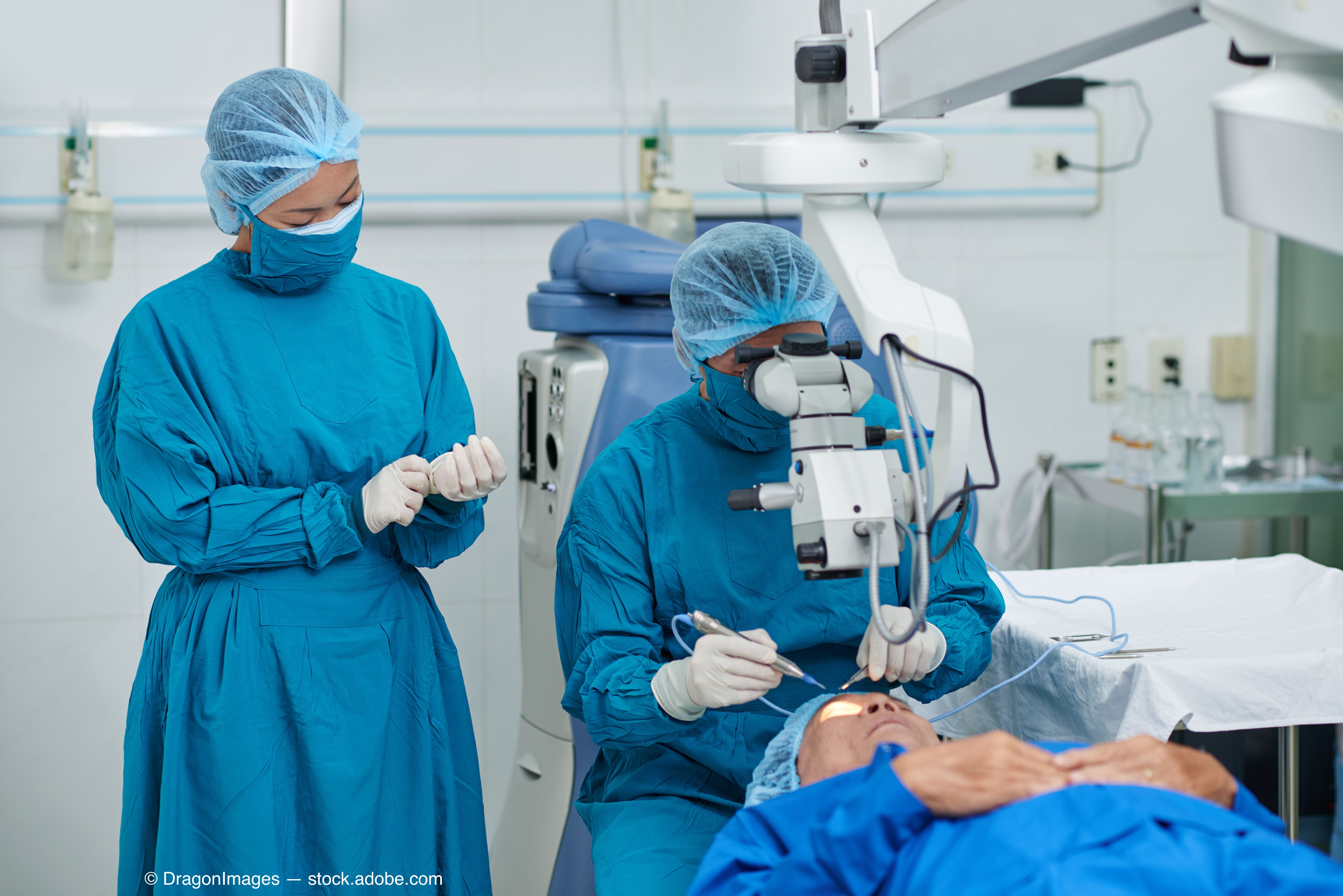Article
Study examines risk factors for endophthalmitis after cataract surgery
Author(s):
According to investigators, the elevated risk is associated with cataract type, case complexity, and history of DME/PDR.

A team of investigators that included Michael H. Goldstein, MD, president of Ocular Therapeutix Inc., conducted a large retrospective analysis to identify the risk factors for endophthalmitis after cataract surgery.
The study used the IRIS Registry and reported that complex cataract procedures, the performance of simultaneous vitreous procedures, a history of diabetic macular edema or proliferative diabetic retinopathy, male sex, and certain cataract types were associated with significantly higher rates of endophthalmitis.
The investigators also determined if use of the ReSure Sealant impacted the incidence rate of endophthalmitis either way. This hydrogel sealant creates an in situ temporary soft surface barrier to prevent wound leaks from clear corneal incisions up to 3.5 mm in size following cataract surgery.
The investigators compared the incidence of endophthalmitis within 30 days of any cataract procedures performed with and without the ReSure Sealant and the incidence of endophthalmitis within 30 days after any cataract surgery performed in the US.
This study included patients who underwent cataract surgery from January 1, 2016, to December 1, 2019. All patients underwent phacoemulsification with intraocular lens implantation and had completed 1 or more visits within 30 days postoperatively.
Data from more than 6,700,000 eyes (4.1 million patients; 58.9% women; mean age, 70.91 years) were included. More than 3.5 million eyes underwent surgery at practices in which the ReSure Sealant was available.
About 93% of cases were routine and the remainder were considered complex. Two-thirds of the cataracts were the nuclear sclerotic type, and the rest were cortical, posterior subcapsular, congenital, and traumatic. Glaucoma procedures were performed concurrently in about 3.5% of cases and vitreous procedures in about 0.5% of cases. Slightly more than 20% of patients had a history of diabetes.
The overall incidence of endophthalmitis was 0.633 case per 1000 surgeries.
The incidence of endophthalmitis was significantly higher after complex procedure compared to routine procedures, ie, 1.148 vs. 0.592 case per 1000 surgeries, respectively (p < 0.0001).
Based on the use or no use of the ReSure Sealant, no significant difference was found in the incidence of endophthalmitis, i.e., 0.609 vs. 0.660, respectively.
The specific clinical risk factors that the data analysis identified in association with higher incidence rates of endophthalmitis were complex cataract procedures (odds ratio [OR], 1.67); concurrent vitreous procedures (OR, 4.32); traumatic (OR, 4.84), nuclear sclerotic (OR, 1.18), and posterior subcapsular (OR, 1.21) cataracts; and a history of proliferative diabetic retinopathy (OR, 1.53) or diabetic macular edema (OR, 2.04). Male sex (OR, 1.19) and multiethnicity (OR, 2.60) also were significant risk factors. All comparisons were significant (p < 0.0001).
“These results provide risk factors for endophthalmitis after cataract surgery from 2016 to 2019 and can identify patients at high risk of developing endophthalmitis after cataract surgery,” Goldstein concluded.




